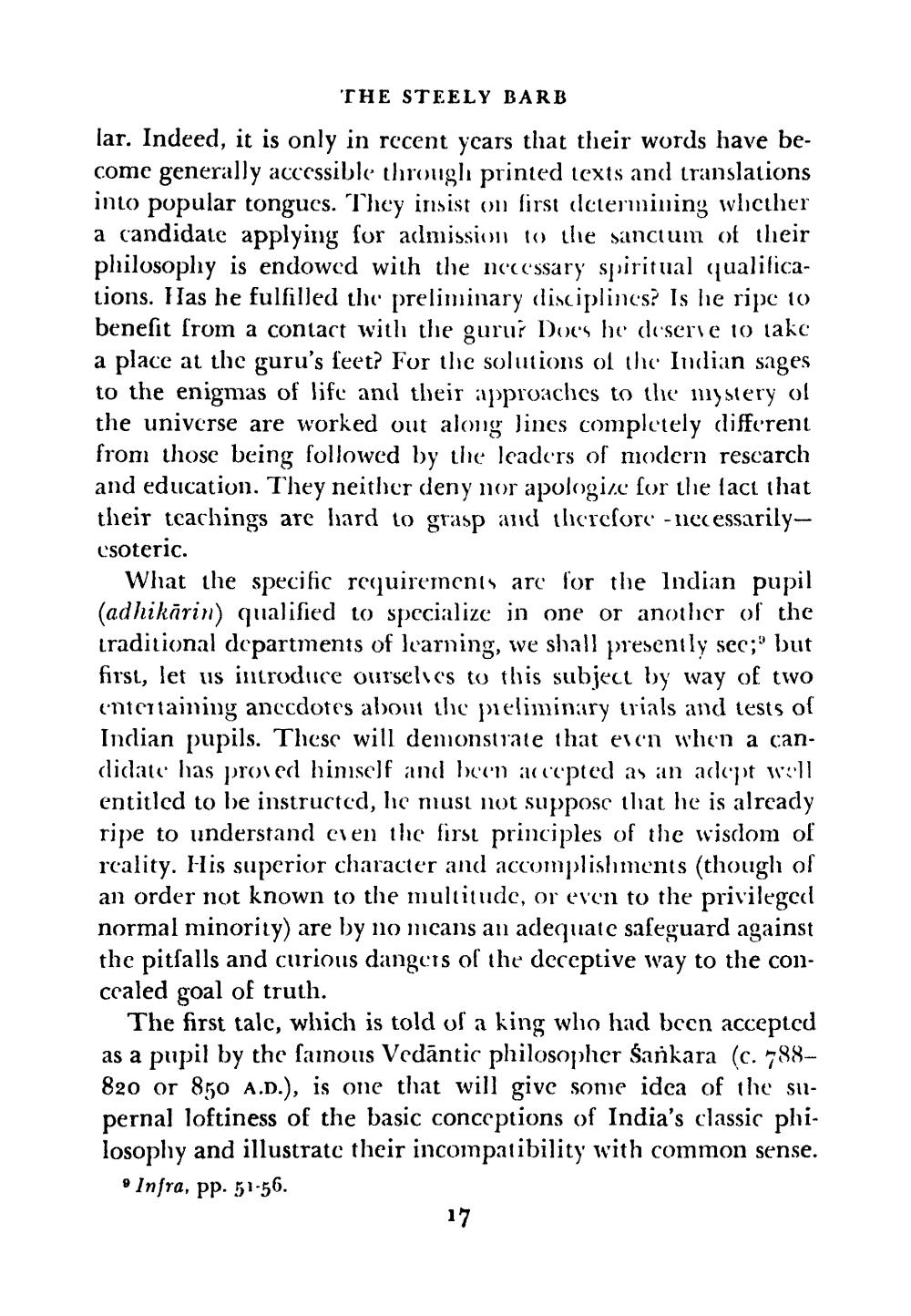________________
THE STEELY BARB
lar. Indeed, it is only in recent years that their words have become generally accessible througlı printed texts and translations into popular tongues. They insist on first dctermining whether a candidate applying for admission to the sancium of their philosophy is endowed with the necessary spiritual qualificalions. Has he fulfilled the preliminary (disciplines? Is he ripe 10 benefit from a contact with the gurur Does he deserve to take a place at the guru's feet? For the solutions of the Indian sages to the enigmas of life and their approaches to the mystery ol the universe are worked out along lines completely different from those being followed by the leaders of modern rescarch and education. They neither deny nor apologize for the fact that their tcachings are hard to grasp and crcfore - necessarilyc'soteric.
What the specific requirements are for the Indian pupil (adhikārin) qualified to specialize in one or anouier of the traditional departments of learning, we shall presently sec;' but first, let us introduce ourselves to this subject by way of two entertaining anccdotes about the preliminary trials and tests of Indian pupils. These will demonstrate that even when a candidate has proved himself and been accepted as an adept well entitled to be instructed, he must not suppose that he is already ripe to understand even the first principles of the wisdom of reality. His superior character and accomplishments (though of an order not known to the multitude, or even to the privilegedi normal minority) are by no mcans an adequate safeguard against the pitfalls and curious dangers of the deceptive way to the concealed goal of truth.
The first talc, which is told of a king who had been accepted as a pupil by the fainous Vedāntic philosopher śankara (c.788820 or 850 A.D.), is one that will give some idea of the supernal loftiness of the basic conceptions of India's classic philosophy and illustrate their incompatibility with common sense.
Infra, pp. 51-56.
17




